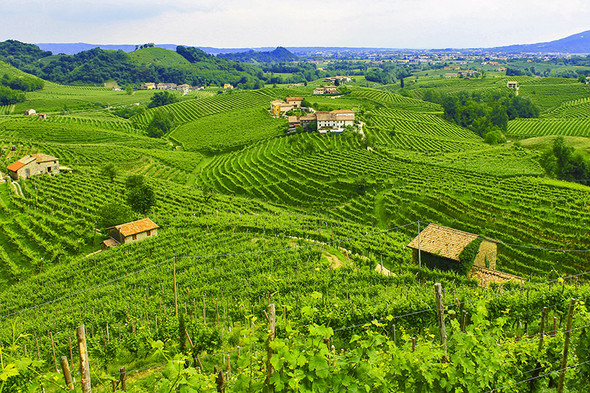When we think of Prosecco, it is typically a light, fruity and fragrant sparkler made totally in stainless steel tanks that springs to mind, but it is the re-emergence of an ancient way of making Prosecco that is currently adding an extra layer of colour to the Prosecco palette.
Prosecco is tapping into the past with the style that is generally referred to as Col Fondo, which can be translated as ‘with sediment’ – a reference to the yeast that stays in the bottle, although the Col Fondo name is not used by all producers. In fact, Drusian has patented the term but many producers actually use the name on their labels. Francesco Drusian explains that the sediment helps preserve the wine and describes it as: “Prosecco before the autoclave [pressurised tank] came along.”
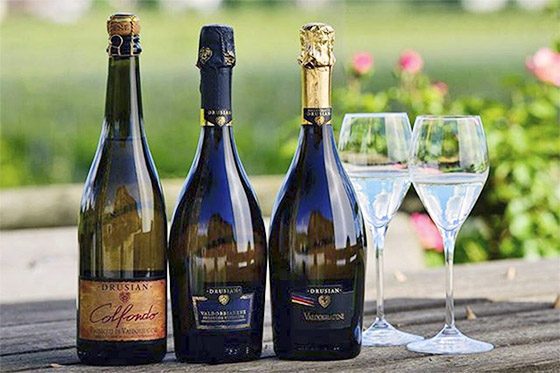
Col Fondo is made in a version of the ancestral method but how this method is applied varies between producers. Common to all is that the second fermentation, or a continuation of the first, takes place in bottle. It does tap modern technology with the first fermentation generally carried out or at least started in tanks. Not only does the yeast bring complexity, it also renders vitamins and nourishing substances, according to Giuseppe ‘Bepe’ Lucchetta. He adds that Lucchetta vini’s Vin Col Fondo is made from slightly overripe grapes of the Glera Balbi clone from a plot with a lot of body-giving clay. He looks after the vineyards while his brother Mario is the senior winemaker.
While Col Fondo does indeed taste yeasty, it generally captures something of the Glera grape’s fruitiness, even though it’s bone dry. Like France’s fashionable, often medium-dry Pétillant Naturel wines, the yeasts remain in the bottle right up until serving, but with Col Fondo all the sugar is converted, leaving a dry wine. Col Fondo was always served before the ‘regular’ Proseccos on the winery visits we made and it can be poured with the lees shaken up, resulting in a cloudy wine, or it can also be served clear if the lees are kept firmly at the bottom of the bottle with careful handling.
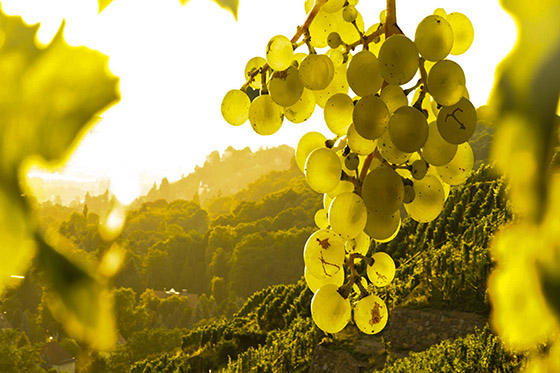
While Col Fondo isn’t going to seriously threaten Champagne in terms of complexity or elegance, it certainly does offer another string to the Prosecco bow. It’s über trendy in Italy right now and some of it is pretty complex, but it often has very good drinkability too. Currently, Col Fondo is mainly made in the lighter sparkling frizzante style but this may change in future as the Consorzio is considering enabling it to have full-blown bubbly spumante status.
Malibràn has two Col Fondo labels: the per tradizione Sottoriva; and Credamora, which has no sulphur added and had that biting on lemon kind of rawness. The wines stretch back over several vintages. Never mind vintage variation when it comes to Col Fondo, according to Malibràn winemaker Maurizio Favrel. “Every bottle has its own life,” he says. He is also a firm believer in the ageing potential of Col Fondos, as well as regular Proseccos. Valdellövo’s is simply called Bade and also carries the words Fermenti naturali on the front label.
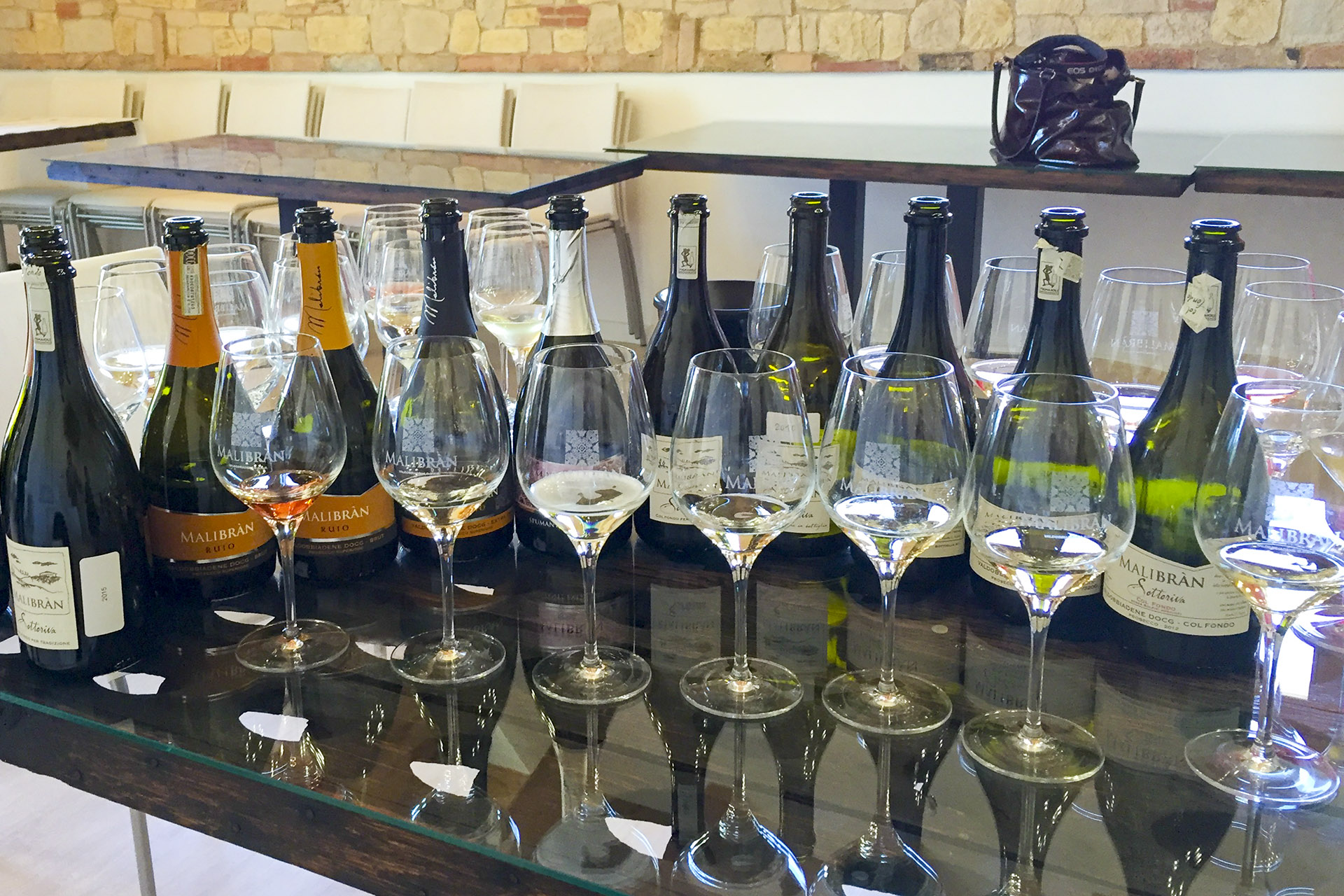
Valdellövo’s Bade 2013 comes from 60-year-old vines, and is 90% Glera with the other 10% made up of Bianchetta and Verdiso, from the hills of Collalto and Susegana on the Conegliano side of the Prosecco DOCG area. After the pressing of the grapes, the must was fermented in steel tank for ten days. The wine was then conserved on fine lees (feccie nobili) for six months. Next, selected yeasts were added to the tank and the wine was then bottled by hand. The second fermentation then started in the bottles. It spent 20 months on the lees and is unfiltered.
‘Regular’ Prosecco heads in drier direction in stellar 2015 vintage
The 2015 vintage looks like an excellent one for Prosecco DOCG with abundance in terms of quantity to allay supply fears brought on by the washout of the 2014 vintage, and wines with vibrant fruity and floral aromas backed up with good fruit and balance on the palate. While there’s still a sea of the sweetish Extra Dry Prosecco, the style traditionally quaffed by the Italians themselves, increasing numbers of producers are working on progressively drier offerings, through a combination of meeting international demand for drier wine, as well as preferring it themselves in some cases. The Bruts themselves are heading south in terms of sugar content. Valdellövo and Ruggeri’s Bruts weighed in on the sugar scales at 7 g/l, while Malibràn went lower still with its self-explanatory 5 grammi Brut. These were all linear, focussed, edgy and exciting. Valdellövo plans to reduce the sugar further for the next vintage’s bottling.
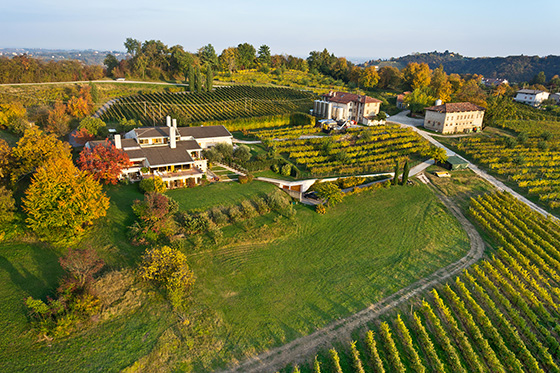
With Prosecco, the highest quality DOCG (Denominazione di Origine Controllata e Garantita) category, which has been in place since 2009, really works in indicating a step up in quality from DOC (Denominazione di Origine Controllata), although as ever in the world of wine, there are some exceptions. DOCG Proseccos can only come from the prized Prosecco heartland that lies in a 35 km strip of hilly terrain lying between the towns of Conegliano and Valdobbiadene, plus an adjoining small area around the town of Asolo. The DOCG area is nicely protected from the northern cold but does have a significant diurnal temperature range that helps preserve the fresh aromas and acidity. DOC Prosecco comes from flatter land in neighbouring areas in the Veneto.
It is notable that Prosecco from the DOCG’s most prestigious vineyard, the 107-hectare Cartizze, is usually Dry – the sweetest of the three categories, which starts at 17 g/l and goes up to 32 g/l. The logic usually put forth for this is that the higher acidity that this vineyard delivers thanks to its complex cocktail of soils brings balance to the wine, although on tasting many feel that the scales are naturally tipped in a sweetish direction. Another reason is said to be the extra ripeness that the grapes achieve on this prime hillside site. However, the drier trend is even spreading to the hallowed steep slopes of Cartizze as witnessed by Villa Sandi’s exciting Cartizze Brut. Incidentally, Villa Sandi also makes traditional method sparkling wine from Chardonnay and Pinot Noir.
The rise of the Rive
Cartizze may be joined in future by other names, such as Colbertaldo, Santo Stefano and Soligo, among others, if the increasing number of releases of single-vineyard Rive pique the interest of critics and consumers alike. Rive is a word from the local dialect meaning vineyards on steep sites, some 43 of which are now classified as Rive. Indeed, there are some very steep sites in the DOCG, especially on the Valdobbiadene side. This move brings yet wider variety to the Prosecco DOCG picture, which has long been one of uniformity between the blending of various vineyards, often balancing out the fruitier and richer wines from the clay of Conegliano with the more floral, acidic and mineral wines of the steeper sites and more limestone soils around Valdobbiadene.
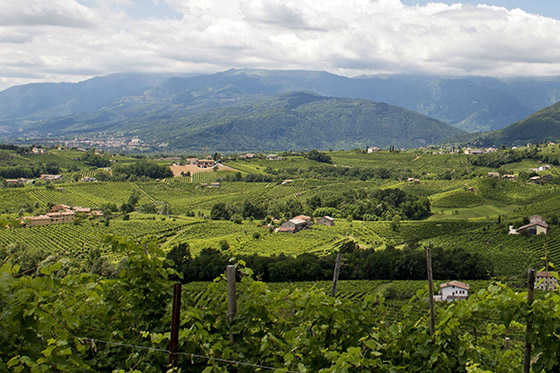
The resurgence of other grapes and the emergence of organic
While the Glera grape continues to dominate Prosecco DOCG, there is something of a resurgence in other local grape varieties. Marchiori incorporates a total of five grapes in its wines, with the blend certainly bringing about distinctive flavours with more nuttiness than usual. In addition to Glera (or Glera Tonda as it is also known), Marchiori uses Glera Lunga, Bianchetta, Verdiso and Perera.
Organic is not a word often uttered in Prosecco DOCG, which may have something to do with the high average rainfall of 1,200 millimetres per year rendering fungal diseases a considerable threat and one that only natural treatments would supposedly struggle to contain. Nevertheless, L’antica Quercia is making good progress with its organic wines after starting the conversion to organic in 2007 and it is now fully certified as organic, with the first organic grapes harvested in 2010. The estate is named after a 450-year-old Downy oak tree that watches over the estates 25 hectares of vines that are all in one block. L’antica Quercia also produces organic extra virgin olive oil. The olive trees of the area died back in a very cold winter in the 1880s and L’antica Quercia’s owner, who hails from the olive oil epicentre of Puglia, is keen to re-establish olive oil making up here.
In other news, the hills of Conegliano Valdobbiadene have recently been included in the National Register of Historic Rural Landscapes by Italy’s Ministry for Agricultural, Alimentary and Forestry Policy, as well as being awarded the title of European City of Wine for 2016 by the European Network of Wine Cities. It is hoped that these successes will act as an incentive to the area achieving eventually being listed as a UNESCO World Heritage Site.



